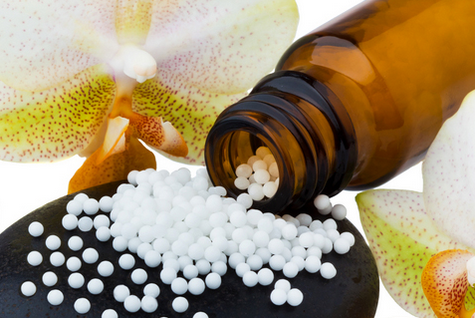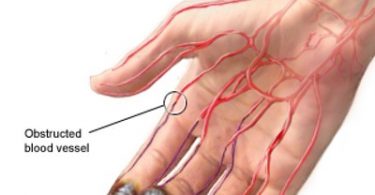A Brief Historical Evolution
How have the concepts of homeopathic posology evolved with Hahnemann and over history to our current understanding on the subject.
- Hahnemann discovered that the reduction of material quantity of drug by dilution along with a process of friction enormously developed the curative drug potential. Reduction of quantity to avoid aggravation and the discovery that inert drugs were also developed into curative medicines were the two most important reasons for potentization.
- With the miasmatic theory and the concept of ‘dynamis’, the dose had reduced to an undetectable and infinitesimal small level.
- Importantly, in the realm of infinitesimals, Hahnemann potentised the drug to 30C (1/1060) and suggested this as a limit. He believed that even in the realm of infinitesimals, there had to be a limit.
- In the latter and major part of his practice, Hahnemann’s range of potencies was 30C, 24C, l2C and l8C.
- There is no evidence or writing on the subject of selection of a particular potency for a given case in the later years of his practice. Also there is no discussion on using a range of potencies in a given case.
- In the final years of his life, he felt the need for modifying the potentization technique in certain cases. Hence, he modified and altered the centesimal scale. But he did not outrightly reject the centesimal scale and he was still using those potencies at the time of his death. This is evidenced by the presence of centesimal potencies in his medicine chest and other writings on that era.
- Hahnemann felt it necessary to modify the dilution factor (1/500 X 1/100) to reduce aggravation and increase the friction (100 succussions) to make it more potent instead of raising the potency infinitely as was happening during his time.
- Hahnemann restricted the potencies that he regularly prepared by hand to 30, 24, 12, 18 and LMs.
- The most important and central issue in Hahnemannian posology was to achieve cure with the least aggravation and in the fast duration of time. All developments and modifications towards the final years of his life like olfaction, deviated aqueous doses and fifty millesimal scale were steps in this direction. The focus was more on the administration of the dose, to suit the sensitivity of the patient.
- There were currents of deviation during Hahnemann’s time such as use of double remedies; no limit in potentization; change of scale of potentization.
- An important milestone in homeopathic posology was the mechanisation of potentization that resulted in potencies beyond conception of human mind.
- Hahnemann stressed on standardization of potentization technique, so that results could be compared. But, unfortunately different potencies with different concepts of dilution and friction found way into homeopathic practice with the same designation.
- Hence, arose the various schools of posology — Low (crude to 3C/6X); High (infinitesimal doses — 3C to 30C); Very high (Machine potencies — beyond 30C).
- After Hahnemann’s death, no mention of the new, altered and perfected method of potentization (fifty millesimal scale) that Hahnemann was working on in the last years of his life.
- Different views emerged on the basis for selection of the right potency, repetition and mode of administration of the indicated medicine.
- Experience showed that 30C was not the ultimate limit of efficacy of all medicines. Provings were done and cases of cures were recorded much beyond 30C, the maximum limit of potency that Hahnemann used on a regular basis.
- Though there were a plethora of guidelines by various homeopaths, there were no definite and uniform guidelines and there was also not a universal agreement as to which potency to be selected on the basis of these guidelines.
- On the question of repetition, there seemed to be a more uniform view. One single dose of the remedy without any repetition whatsoever is insufficient to bring about a complete cure in all chronic and most acute cases. Too frequent repetition is harmful. Repetition should be decided in relation to the response produced by the previous dose or remedy reaction. In other words, guideline for repetition should be a strict clinical study of the response to previous dose.
- But, it is important to note that few realized and followed the guidelines of repetition as detailed in the 6th edition of Organon that was published later.
- Kent was one of the biggest exponents of high potencies. His most significant contribution to homeopathic posology was the stress on using a range of potencies for affecting a cure, especially in the management of chronic diseases. Ascent of potencies and use of series in degrees of the range of potencies were the basic principles of Kentian posology.
- Most popular use of potency by Kent, including the onset of treatment, was the 10M.
- Almost all types of pathologies were managed by Kent with high potencies.
- Kent put stress on the reappearance of original symptoms after first prescription and made it an essential condition for repetition of the first dose.
- The tendency before Kent was to use potencies mainly up to 30. It went upwards to 200 and those that used the special potencies of Jenichen, Dunham or Fincke, it went into the ‘Ms’. With the death of Fincke in 1906 and the rise in popularity of Kent, the use of these potencies started reducing. Some contemporaries of Kent like Clarke and Boericke still stuck to the lower scale potencies.
- Kent’s students and followers like Tyler, Borland and later Elizabeth Wright Hubbard and Pierre Schmidt mainly used potencies 30, 200, 1M and 10M.
- Hence, one can trace a distinct shift in the prescriptive habits of homeopaths with the influence of Kent. Kent’s popularity and success had shown, to a new generation of homeopaths, the efficacy of using higher potencies in practice. This was simultaneous to the popularity of his repertory and focus on mentals and the study of ‘drug pictures’.
- Though Kent’s students did not use potencies as high as his, the potencies that became popular were 30, 200, 1M and 10M.
- The sixth edition of ‘Organon of Medicine’ was translated into English and published by William Boericke 78 years after the death of Hahnemann, in 1921. The most important changes from the 5th edition, in relation to posology include modified guidelines on dosage and repetition and method of dynamization.
- Dr Charles Pahud of Lausanne was probably one of the first to study and publish an article and cases on ‘Fifty Millesimal Scale’. Dr Pierre Schmidt of Geneva also published an article ‘The Hidden Treasures of the Last Organon’ that drew attention of homeopaths to these changes. These potencies were used partially or completely by some Indian homeopaths, prominently Dr S. M. Bhattacherjee, Dr Harimohan Chaudhary, Dr J. N. Kanjilal, Dr Ramanlal Patel and others.
- Still, many homeopaths did not outright discard the centesimal potencies. They continued to use both centesimal potencies and experimented with LM potencies.
- So, we have multiple, contradictory approaches to modern posology.
- Practising with potencies below 30C, including mother tinctures. This is also prevalent in many parts of the world, where legal hurdles restrict the manufacture and sales to lower potencies.
- Practising with just one or two potencies, mostly 30, 200, 1000.
- Practising with potencies 1000 and higher.
- Practising with LM potencies, the method of dispensing, not strictly according to Hahnemannian guidelines.
- Practising with wait and watch policy.
- Practising with indiscriminate repetition and so on.
Different Views on Homeopathic Posology — where do different homeopaths disagree?
The different viewpoints in homeopathy are related to the following:
What should the scale of reduction of dose be?
- When Hahnemann was working with material doses, the dose or its reduction was specific to specific drugs. As he experimented with immaterial doses, he settled for the centesimal scale for his dilution.
- During his time, other scales of dilution were suggested with a ratio of 1:9 (Decimal) and 1:999 (Millesimal).
- In his last years at Paris, Hahnemann utilized the fifty millesimal scale and considered it to be superior to the centesimal at least in chronic resistant cases.
- Korsakoff suggested the single-vial method in contrast to Hahnemann’s multi-vial method of succussion.
- Others like Fincke, Jenichen and Dunham entirely modified the concept of dilution and/or friction to prepare potencies not comparable by any means with the standard Hahnemannian procedure and claiming to be high potencies.

How minimum should the minimum dose in homeopathy be?
- The dilution of drugs in homeopathy on a definite scale has never followed any laid guidelines.
- The most popular scale of reduction has been the centesimal scale with potencies regularly manufactured being mother tinctures, 1C, 2C, 3C, 6C, 9C, 12C, 30C, 200C, 1 M, 10M, 50M, CM and MM.
- Most of the intermediate potencies like 18C, 24C, 2M, 4M, 45M, etc. which were popular with Kent and other homeopaths are not available today.
- So, the homeopath today has in his possession approximately 10–15 potencies of various remedies in the market with which he can start his treatment.
- No experiments or detailed clinical studies have yet distinctly proved the relative value of each potency for each remedy.
On what basis should one decide how minimum the dose be? In other words, what should be the parameters for selection of potency?
- The most important guiding factor in the selection of potency is susceptibility and sensitivity / reactivity of the patient.
- Collating the experiences of various homeopaths, this is judged through a study on type of disease, seat of disease, pace / intensity of disease, stage of disease, type of pathology, degree of characteristics in case, mental characteristics, degree and level of similarity between disease and remedy and source, kingdom, toxic / non-toxic / inert nature of indicated medicine etc.
- Unfortunately, the parameters for selection of potency cannot decide what potency to choose for each individual case.
How should one repeat and administer the selected potency?
- The most important Hahnemannian teaching in posology is in relation to the mode of administration and the repetition of the indicated remedy.
- Hahnemann advised aqueous medium as the most potent way of administration. This also has an advantage to administer in deviated doses and to adjust the dose to suit the sensitivity of the patient.
- In contrast, the mode of administration of the potency was of little significance to Kent, who stressed on raising the potency after its action was exhausted and not on deviating the potency. It is to be remembered here that Kentian instructions were without the knowledge of the Hahnemannian methods of the 6th edition of the Organon.
Posology and the Incorrect Medicine
The success in achieving cure, primarily and mainly depends on the right and perfect selection of a remedy based on symptom similarity. Simillimum is the basic and most important parameter and pre-requisite to the correct homeopathic posology.
Every conscientious homeopath dreams and aims to achieve simillimum in all cases. But one may not always be successful. Whatever may be the reason, the selection, many a times is not the right simillimum for the case.
We believe that we have a right prescription. But, are we sure? The remedy reaction may throw up a response that is not desired. Does the fault lie in a wrong selection of the remedy or of the dose? Do the guidelines for posology change in such a situation?
- The first step is trying to trace an accurate portrait of the disease.
- The second step involves identifying a single homeopathic remedy, which the physician decided as the most suitable to the case.
- The third step involves in administering this single remedy in the potentized form in a ‘dose that the physician believes will give the best cure’.
- If the selection of the remedy is unsuitable then Hahnemann writes in Aphorism 283, ‘….For should he be misled by human weakness to employ an unsuitable medicine, the disadvantage of its wrong relation to the disease would be so small that the patient could through his own vital powers and by means of early opposition of the correctly chosen remedy according to symptom similarity (and this also in the smallest dose) rapidly extinguish and repair it.’ Hence, an unsuitable medicine given in a single minimum dose without unnecessary repetition will cause minimum damage.
- For an unsuitable homeopathic remedy, but repeated too often, Hahnemann writes in Aphorism 275 (6th edition of the Organon), ‘ … .If we give too strong a dose of a medicine which may have been even quite homoeopathically chosen for the morbid state before us, it must, notwithstanding the inherent beneficial character of its nature, prove injurious by its mere magnitude, and by the unnecessary, too strong impression which, by virtue of its homoeopathic similarity of action, it makes upon the vital force which it attacks and, through the vital force, upon those parts of the organism which are the most sensitive, and are already most affected by the natural disease.’
- According to Kent, if a remedy is only partially similar, it will act in only 1 or 2 potencies, after which the symptoms change calling for a new remedy. Hahnemann also writes in Aphorism 183 (6th edition of the Organon), ‘ … Whenever, therefore, the dose of the first medicine ceases to have a beneficial effect (if the newly developed symptoms do not, by reason of their gravity, demand more speedy aid – which, however, from the minuteness of the dose of homoeopathic medicine, and in very chronic diseases, is excessively rare), a new examination of the disease must be instituted, the status morbi as it now is must be noted down, and a second homeopathic remedy selected in accordance with it, which shall exactly suit the present state, and one which shall be all the more appropriate can then be found, as the group of symptoms has become larger and more complete.’
Hence, a partially similar remedy will act on the case, will produce some change. But the physician always has to be alert and observant of all the perceptible modifications in the state of the diseased man. To accurately judge the effect of the prescribed remedy and the dose, one should have a sound knowledge of:
- Disease and miasm
- Remedy — its pathogenicity, miasm and scope of action
- Remedy reaction
- Hering’s law of direction of cure
It is to be remembered that many cases reported in seminars and journals may not be entirely curative or cure not following the fundamental principles of homeopathy. To derive conclusions, in such cases may be erroneous.
Journey from Crude to 30C to LM
Hahnemann is the one and only homeopath who has actually travelled from crude material doses of various medicines to minute infinitesimal doses based entirely on clinical experience.
The journey led him to potentize up to 30C, which he had almost labeled as the standard potency. Influenced by some of his followers, he had also tried higher potencies than 30C. These higher potencies had proved to be beneficial, but he still did not regularly advocate these potencies. This suggests that he experienced some problems with the use of potencies 30 or higher and did not advocate them on a regular basis for all types of cases, especially chronic resistant cases. It was this search for a more suitable remedy for these chronic cases that he modified both the scale of dilution and the amount of friction to result in potencies that were more potent as well as mild in its action. Combined with a method of administration, the regulation of which was based entirely on the sensitivity of the patient, he created the most successful individualized posology system for achieving the highest ideal of cure.
What is the best dose / potency that cures?
Hahnemann always suggested in his writings that succussion gives the medicinal strength and dilution adds a degree of mildness, it is the ratio between succussion /dilution that determines the final strength / mildness of the preparation.
In the present dispute as to the excellence of one or other potency, the question is not whether one or the other potency has the power to produce a cure as both of them have the power and this has been proved by innumerable facts. The question is what potency has the greater excellence, as to the thoroughness and durability of the cure.
Since most homeopaths claim to cure with ‘their’ methods of posology, let us assume all of them to be true. That means, if the simillimum selection is right, it should work in any potency in which it is given. Kent claimed cures of tumours with CM and MM potencies, for which Clarke prescribed 3C and low potencies.
Hence, the selection of simillimum is more important than the selection of potency. As any potency will show an effect, it is important to understand that which dose, potency, scale, administration technique and rhythm of repetition produces cure, with minimum aggravation and is rapid and permanent as per the definition of cure described in Aphorism 2.





